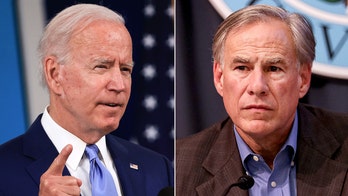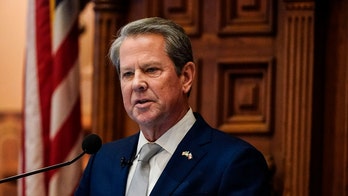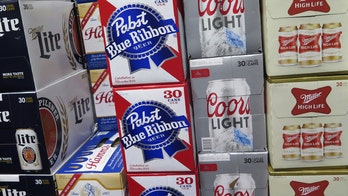The White House and congressional Democrats have made several moves to promote the interests of labor unions, but the efforts may result in fewer jobs available to workers, say critics who argue that unions restrict competition by raising wages and expanding government.
Unions used to comprise more than 30 percent of the labor force in the 1930s, '40s and '50s, when fewer labor laws were passed to rein in business taking advantage of employees. But unions find themselves now at about 7 percent of the workforce.
Lee Ohanian, a professor of economics at UCLA, recently finished a study at the American Enterprise Institute that examined what would happen if the U.S. returned to unionization levels of the 1970s. He said the numbers wouldn't be good for economic recovery.
"My estimates suggest (we) could lose perhaps 5 million jobs and lose about 500 billion worth of GDP if unionization returned to levels we had in the 1970s and if new union members were able to command the 15 percent wage premium that historically is applied to union membership. So we would have a much sicker economy than we have right now."
Ohanian said unions raise the price of labor above prevailing prices in a competitive marketplace to businesses, and that raises the cost to businesses.
"That increases their prices, that lowers production and output, and at the end of the day it reduces employment for the overall economy," Ohanian said.
But Thea Lee, deputy chief of staff for the AFL-CIO, said when unions were stronger, the gap between rich and poor closed.
"During the period from 1947 to 1973, when unions were getting stronger and they represented more than a third of the workforce, that was a period of time where we had productivity growth and we had real wage growth. ... And that was a good time, was a prosperous time, for America," she said.
Small businesses -- the greatest creator of jobs -- have been particularly hard hit by unionization. Between 2003 and 2006, 55 percent of union elections took place in small businesses.
But businesses aren't the only areas where unions have expanded.
"More than half of the unions in the United States today are public employee," said Michael Barone, a senior writer for U.S. News & World Report and co-author of the Almanac of American Politics. "One third of the stimulus package in 2009 was directed at state and local governments, and in many ways that (was) used to maintain payrolls, public employee union members, to keep the dues coming in at a time we've been losing 8 million jobs total in the private sector.
Ohanian and Barone both said they see linkages between the highest union-employing states and unemployment rates, particularly in Michigan and Nevada, where the auto and gaming industries are respectively unionized. Likewise, states like New York, New Jersey and California, with strong public unions in government, are also finding themselves with financial catastrophes on their hands.
Democrats received $400 million from unions in campaign support in 2008, and since the election President Obama and Democrats have offered several incentives to keep unions happy. Among them, Obama signed an executive order that gave preference to labor unions for large federal contracts.
More recently, he placed Craig Becker, a recess appointee, on the National Labor Relations Board. A former counsel to the Service Employees International Union, Becker has advocated for the NRLB to be able to enforce its own interpretations of labor law.
Congress also included a requirement in the 2008 Recovery Act that any project funded with stimulus dollars pay the prevailing wage, which typically is union-size wages.
Other efforts are also in the works. One bill currently being debated would require that Fedex, a major employer in the country, become unionized, a bid to equalize competition with union shop UPS.
Another bill would allow a minority of workers to decide whether to hold an open vote on unionizing a shop even if a majority of workers don't want to unionize. It would also impose federal arbitration on union contracts.
But those issues also cause heartburn for Democrats.
"When George Bush was president, every Democrat in the Senate not only voted for it, but co-sponsored it," Barone said. "But when there was a real chance for it becoming law, after Barack Obama took office, suddenly Democratic senators like Blanche Lincoln of Arkansas, suddenly decided it wasn't such a good idea after all. ... And that's left the labor union leaders unhappy."
Lee said that unions are aware of the potential backlash for incumbent labor supporters and are kicking off re-election campaigns in Michigan, Ohio, Pennsylvania, California and New York.
"We are concerned that the terrible state of the economy right now is going to be rough on incumbents, and that's one of the reasons this is going to be an important election year. But we're going to be working very hard to make sure that the members of Congress that stand with working people that vote for jobs are rewarded at the polling place in November."
To increase wages, Ohanian suggested raising worker productivity and increasing investment in education to retrain workers to higher-skilled jobs.
"The more productive our workers are, the more they make and the more they're worth in the marketplace," he said




